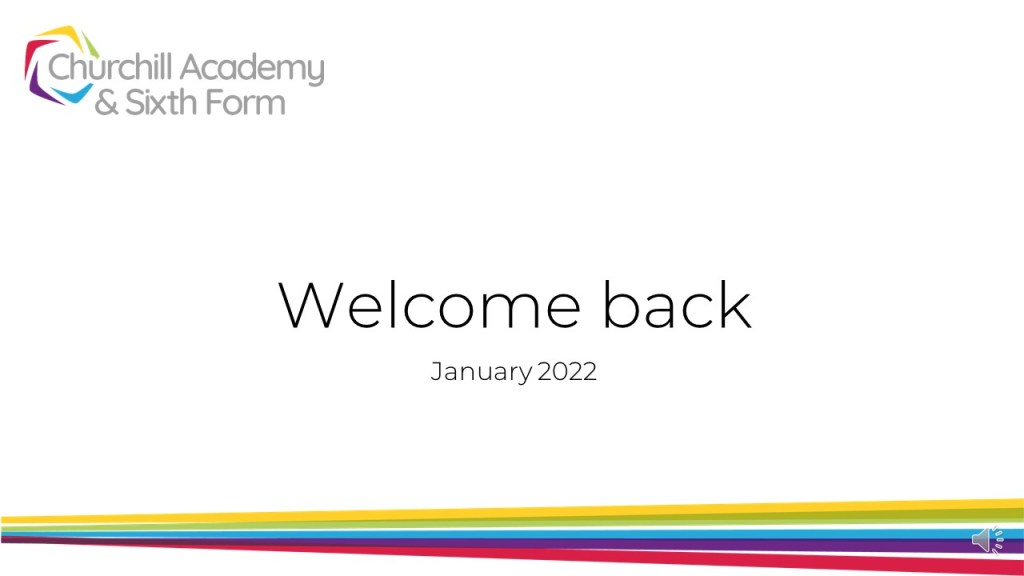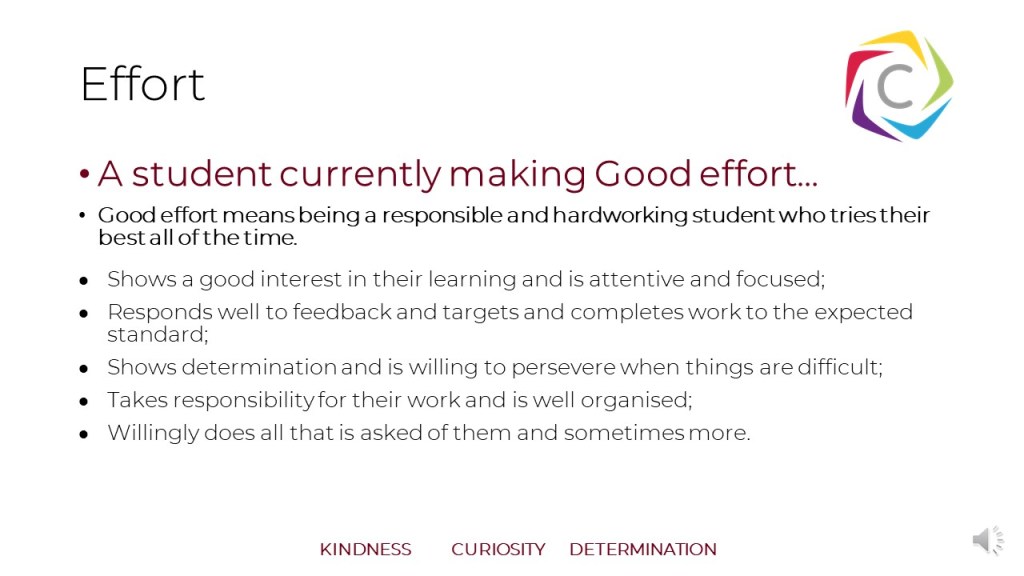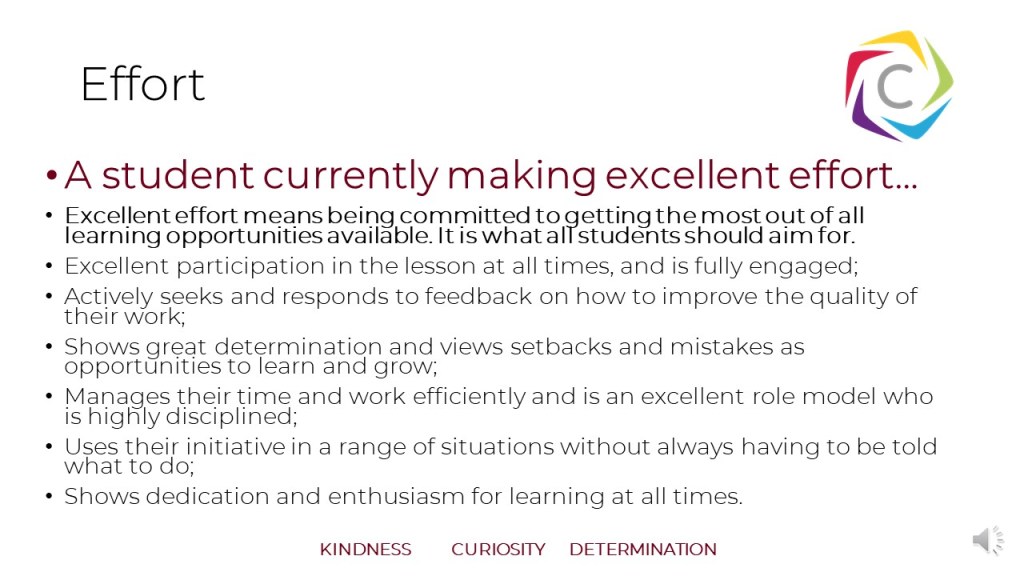
My welcome back assembly this week was delivered as a YouTube video, rather than live in the Academy hall, due to the ongoing COVID-19 restrictions. And that is – inevitably – how I opened my assembly: going through the COVID protocols for the month of January with a run-through of the rules about face coverings; expectations around twice-weekly testing; an explanation of the teacher’s role in balancing the need for good ventilation with a comfortable working temperature in winter; and an update on what we know about vaccinations for 12-15 and 16-18 year olds.
Once this reminder was out of the way, I wanted to focus my assembly on the importance of effort in learning. At Churchill, we have outlined the six things we know make the biggest difference to learning.

These six things are grounded in educational research, and our experience and data shows that students who show these behaviours in learning are the most successful in terms of their progress and outcomes. And there, right at the top of the list, is determined and consistent effort.
But what does effort look like? Back in pre-pandemic times, we worked hard to describe what our expectations of student effort were. The result of this work was the launch of our effort grades system in September 2020 – which you can read about on this blog here, or on the Academy website here.
Our effort grades system sets up the expectation that all students will make at least “Good” effort. Anything less than “Good” isn’t enough – so it is graded “Insufficient” or “Poor.” It’s really important that our students know what teachers are looking for when we say we are looking for “good effort,” so we have set it out really clearly in their planners – and in my assembly!

We have deliberately tried to write the descriptors for our effort grades as things that teachers can see the students doing in their classes, so that it makes it clear for the students how to show the teachers that they are trying their best. And those students who really push themselves can show that they are putting in excellent effort:


In my assembly, I talked about two students whose effort grades were tracked through Year 9, 10 and 11, and how they did in their GCSE exams (these examples were from before the pandemic, when exams still took place). The percentages shown are the students’ average effort grade score across all their subjects.
Student A started Year 9 with below average effort grades, but worked really hard to improve them. Despite a small dip in the middle of Year 11, this student got better and better over time – and this investment paid off. The student made, on average, 1.3 grades more progress than similar students nationally in their GCSEs. The difference: the effort they put in.
Student B tells a different story. They started Year 9 roughly where student A finished Year 11 in terms of effort, but gradually declined across the three years. The result of putting less and less effort in each time: the student performed, on average, one and a half grades less well across their GCSEs than similar students nationally.
We see this played out time and time again across the students we teach. In class, all students are taught the same lesson, but they don’t all learn the material equally well. There are lots of factors in the mix to explain why that is, but the single biggest differentiator is the effort that the students put in. That is why, at Churchill, we put such an emphasis on effort grades – and it is why, at the start of 2022, I used my assembly to remind students of why if matters, and what we expect.
You can see the assembly below:
